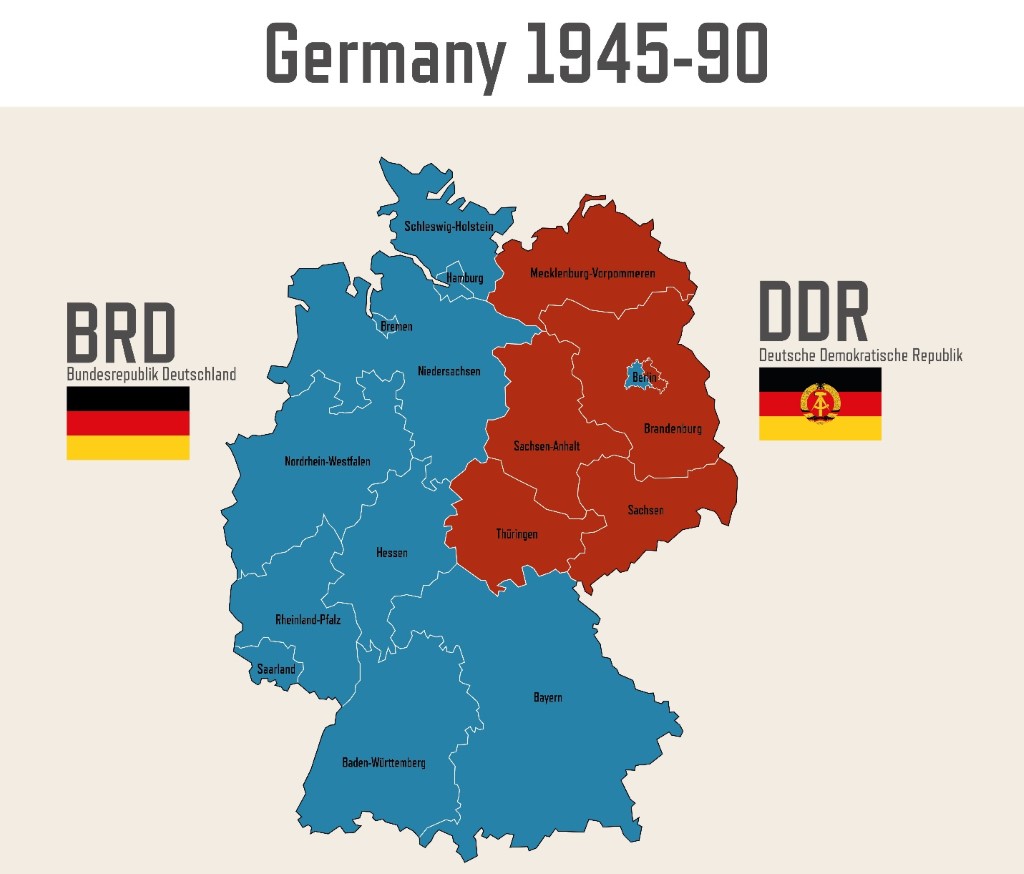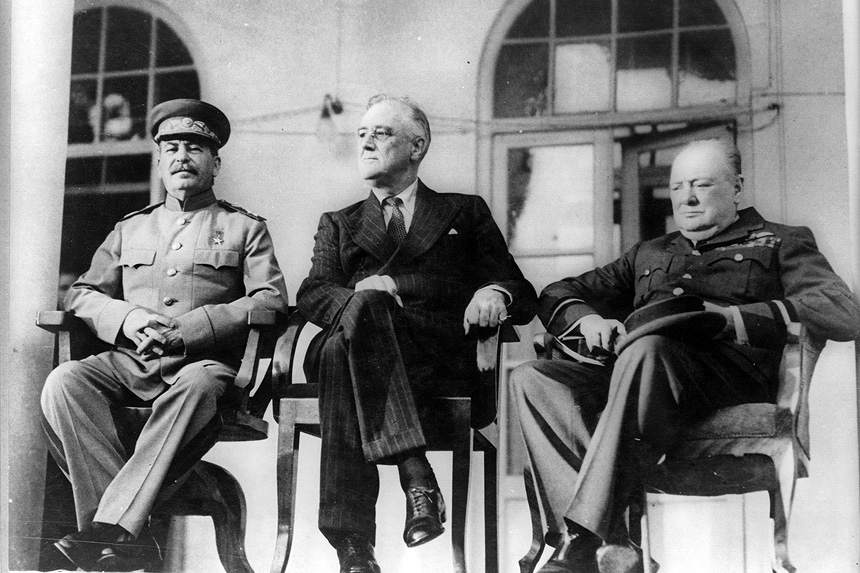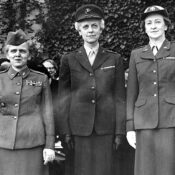75 years ago, at the height of World War II, the leaders of the United States, the United Kingdom, and the Soviet Union came together for the first time. President Franklin Delano Roosevelt, Prime Minister Winston Churchill, and Premier Joseph Stalin each knew that agreements and concessions had to be made, particularly toward Stalin’s strong desire to open a second front against the Axis powers in Europe. The four-day conference resulted in plans that would be crucial to the winning the war and to shaping the post-war world. Here are five ways that this historic gathering altered the outcome of history.
1. Together, for the First Time
While Churchill had met previously with FDR seven times across two continents and with Stalin twice in Moscow, the three men had never been in the same place at the same time prior to November 28, 1943, the first day of the summit. In fact, FDR and Stalin had never met at all until Stalin greeted FDR at the first meeting. Churchill arrived a half-hour later. The historic gathering not only got the leaders on the same page, but also set the stage for further important conferences in Yalta and Potsdam.
Footage of the Cairo and Tehran Conferences from the FDR Presidential Library.
2. The Hard Part Was the Easy Part
Stalin’s main objective was to get the others to open a second front against the Axis in western continental Europe. He’d been trying to persuade Churchill on this since 1941, but Churchill knew that it would have been hard to do with the Mediterranean and northern Africa in play. However, FDR told Stalin early in the conference that he intended to set a target date to open a second front with a mainland invasion of France in May of 1944.That invasion,code-named Operation Overlord, or, as it became known, D-Day, would ultimately be carried out on June 6. Stalin, knowing that his long-desired second front was in the works, also assented the Soviet Union would enter the war against Japan as soon as Germany was beaten.
3. The Birth of the United Nations Was Assured
The League of Nations hadn’t been properly functional in years, and had done nothing concrete to prevent several crises, including the German expansionism that was a forerunner to World War II. In 1941, FDR, Churchill, and FDR’s aide Harry Hopkins created a “Declaration of the United Nations.” The United Nations was FDR’s term for the Allies. The document mentions “Four Policemen,” which were the major Allied powers of the United States, the United Kingdom, the Soviet Union, and China. By January 2, 1942, representatives of 26 different countries had signed it. At the Tehran conference, FDR addressed the idea to Stalin directly, positing that there needed to be a consistent organization to try to resolve issues and prevent global warfare. All three leaders agreed that they needed to pursue the principle after the war. Conferences and meetings continued to further the project until the first official meeting of the U.N. General Assembly in 1946.
4. They Got Other Countries Involved
Turkey had continued to have relations with Germany into the war, but had promised enter the war on the side of the Allies when the country was more prepared. At the conference, Stalin pledged to aid Turkey if Germany or Bulgaria attacked. By 1944, Turkey broke off their relations with Germany and formally declared war on Germany and Japan early in 1945. While the length of time it took Turkey to get involved was seen by many as a more ceremonial or symbolic decision, it did pave the way for Turkey to join the United Nations and, later, NATO in 1952.
The three leaders also agreed to offer aid to partisans in Yugoslavia who were fighting the Axis in their country. Allied air support and Soviet troops on the ground bolstered the resistance and enabled the Yugoslavian troops to drive back the Axis. Many scholars refer to the Battle of Poljana in May of 1945 as the last battle of World War II in Europe.
Other major moves included Churchill and Stalin discussing a change to Poland’s borders. FDR abstained from the conversation as he didn’t want to alienate Polish-American voters at home. On the other hand, FDR did encourage Estonia, Latvia, and Lithuania to be reincorporated into the Soviet Union if the citizens of those countries voted for it.
5. Germany Would Be Divided

Though this would obviously cause many problems later, the powers agreed to an initial idea of dividing a post-war Germany. The theory was that as the driving force behind two world wars, a divided Germany would be less able to precipitate another global conflict. The ultimate result was that the divided Germany became a pivotal location in the later Cold War between East and West until its reunification in 1990.
Become a Saturday Evening Post member and enjoy unlimited access. Subscribe now



